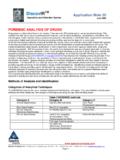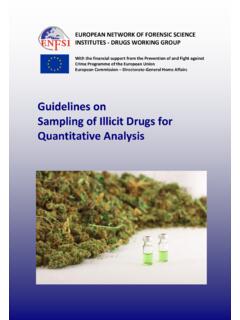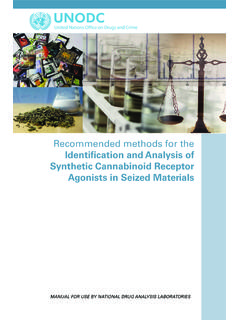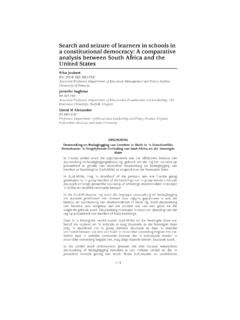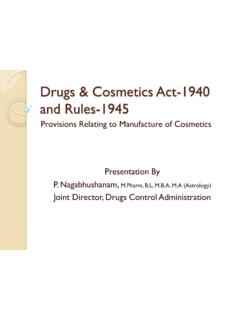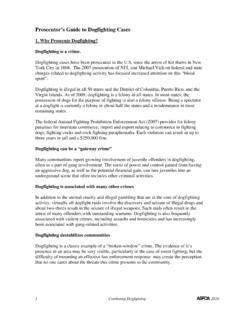Transcription of A Cost-Benefit Analysis of Arts Education for At …
1 A Cost-Benefit Analysis of arts Education for At-Risk Youth By Tony Silbert Lawana Welch Prepared For The Master of Public Policy Program USC School of Policy, Planning, and Development April 30, 2001 Contact Tony Silbert at if you have any questions or comments. 1 Summary arts Education has become a cause celebre in recent years, attracting endorsements from popular artists, politicians, and corporate America alike. However, despite this publicly voiced enthusiasm, funding for arts Education programs is still woefully inadequate. As the economy begins to weaken and a new administration tightens the nation s budget, history tells us that the arts may once again be seen as an expendable luxury for public Education .
2 Recently, there have been several efforts to bolster the claim that arts Education provides multifaceted benefits beyond the ability to play an instrument, paint, dance, or perform theater. Hundreds of studies have suggested the arts capacity for enhancing prosocial behavior and academic achievement. However, few of these studies utilize the kind of sound methodologies and careful evaluations necessary to withstand scrutiny. For this reason, several major organizations, including RAND and the Department of Justice, have taken it upon themselves to perform rigorous studies of the effects of arts Education . Based on the data from these new efforts, this study estimates the costs and benefits of providing quality arts Education for the most disadvantaged children in California.
3 These calculations suggest that by implementing strong arts programs for at-risk 4th through 12th graders, the state can recover one and a half times its investment through savings to the criminal justice system and increased tax revenue. Introduction Everyone from the entertainment industry to the Oval Office has jumped on the arts Education bandwagon in recent years. Celebrities and politicians alike embrace the belief that, as actress and former National Endowment for the arts head, Jane Alexander, once said, If you put 2a paintbrush or oboe in the hands of a 7 year-old, that same child, at the age of 13, will not pick up an Uzi (Farnum 1998). Even former President Bill Clinton has publicly credited his rise to the Presidency on the foundation given him by learning the saxophone.
4 Corporate America has also joined the movement. Large, non- arts related companies such as Folgers Coffee, Texaco, and Edison International have high-profile grant programs to strengthen arts Education throughout the United States. Viacom s VH-1 Save the Music Foundation leverages the talent and good will of mega-stars such as Mariah Carey, Elton John, and U2 to bolster music Education programs in inner-city schools. The arts Education saga has even been brought to the big screen in movies such as Music of The Heart and Mr. Holland s Opus, where art programs are cut from school budgets just to be heroically saved in the 11th hour by enlightened teachers. But those are fictitious plots and outcomes that do not regularly occur in real life.
5 The true story has a much different outcome. Though many influential people say they are supportive of art Education , few are really committed to paying for its implementation. In Europe, the average annual expenditure for art Education is $ per child. New York and Michigan spend $ per child per year. And in California, where the arts have spawned a global industry, a mere $ is spent per child each year. The Los Angeles Unified School District, which trumpeted its far-reaching 10-year arts plan in 1999, is spending $ per child in the current year to offer programming in each of the four disciplines: music, dance, drama, and fine art (Burrows 2001). The LAUSD commitment (no future budget allocations are actually guaranteed) is a relatively exorbitant investment, but is it even enough or rather, could society gain more by investing more?
6 3 Quality arts Education In 1996, RAND published the first of three reports from its arts and Prosocial Impact Study (APSIS), a far-reaching effort to demonstrate decisively that fine- arts programs can contribute in quantifiable and positive ways to solving important social problems such as crime and violence (Stone 1997). The reports inventory and analyze the arts programs most likely to promote prosocial development. For the purposes of this study, this will be the benchmark for quality in arts Education . The most recent report outlines the five program features most strongly associated with such quality (Stone 1998). They are: Extended time-in-program. Program allows participants to repeat classes and offers ongoing sessions that continue indefinitely.
7 Complementary program co mponents. Program provides additional programming beyond arts such as counseling sessions, tutoring and computer labs. Ties with other community organizations. Programs interface on regular meaningful basis with community organizations such as schools, other arts programs, youth service agencies, and community centers. Youth mentorship opportunities. Program facilitates the creation and maintenance of positive and supportive peer-to-peer relationships. Mentors are typically program graduates. Emphasis on performance and presentation. Program emphasizes end-of-session presentation that typically involves weeks of preparation culminating in performance in front of adults and peers.
8 Clearly, this is more than the weekly recorder lesson or papier-m ch project available in public schools that have arts programs. And it costs more as well! Cost of Quality arts Education The first report of RAND s APSIS provides an inventory of 28 programs most likely to have prosocial impact (McArthur 1996). Based on the costs of these programs, as well as the cost of the three programs encompassed by the Department of Justice s YouthARTS 4 Development Project (discussed below), we found the average cost of a quality arts Education program to be $498 per child per year (see Appendix A). [Note: All monetarized figures are in 2001 dollars.] This figure represents the weighted average of all the program costs, the combined total cost of all the programs divided by the total number of participants encompassed by all the programs.
9 Using the weighted average captures the benefits of scale, which are dramatically illustrated in Appendix B. Nevertheless, even with benefits of scale, $498 is more than 500 times the state s current investment in arts Education . Can it possibly be worth it? More specifically, this study aims to determine the costs and benefits from the state s perspective of providing quality arts Education to 4th through 12th graders in the bottom socio-economic quartile. benefits of arts Education The purported benefits of arts Education have been documented in hundreds of studies. Harvard s Project Zero recently analyzed 188 reports related just to academic improvement and the Association for the Advancement of arts claims to have found nearly 400 studies.
10 The measured outcomes generally fall into one of two categories: prosocial development and academic achievement. Some of the indicators of prosocial development include: Better discipline Increased self-esteem Reduced truancy Better relations with adults More hope for the future Increased motivation More positive peer associations Less interest in drugs More resistant to peer pressure Reduced criminal activity Measures of academic achievement include: Improved math ability Improved reading comprehension Improved language skills Increased interest in social studies Improved spatial-temporal reasoning Higher high school graduation rate For the purposes of this study, we have selected one measurable outcome for each type of benefit.

